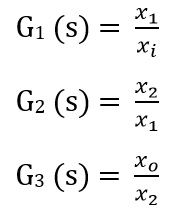Definition: An open-loop system is a type of control system in which the output of the system depends on the input but the input or the controller is independent of the output of the system. These systems do not contain any feedback loop and thus are also known as non-feedback system.
In open-loop systems, the output is neither measured nor fed back to the input for further consideration.
Open-loop System
In our previous article, we have discussed about control system.
We know that a control system directs the operation of a system in order to carry out a specified objective.
Everything around us that provides an output requires proper controlling. Like from a fan, TV, refrigerator to satellites etc. everything needs controlling, thus are control systems.
In the open-loop control system, a reference input is given to the system in order to get the desired output. But the achieved output is not considered by the system for further reference input.
The figure here represents the block diagram of an open-loop control system:

Here as we can see that the system consists of two blocks, one is the controller while other is controlled process.
Basically, according to the required output, an input is provided to the controller of the system. Depending on the achieved input, the controller generates the control signal which is fed to the processing unit. Thus according to the control signal, proper processing is performed and output is achieved.
But as there is no feedback path present in the system, thus whether the achieved output is desired or not the input has nothing to do with it.
So, this is the reason we say that in an open-loop system the input is independent of the output.
It is noteworthy here that this generally produces an error in the system because there exist no chances to adjust the input when the output shows variation from the expected value.
Example
We all are aware of the operation of a traffic light controller present at various road crossings.
Basically the three signals generated by the controller is time-dependent. An internal timing is provided to the controller at the time of designing the system. So, when the traffic signal controller is installed at the crossing then each signal is displayed by the controller timely, independent of the rush present on any of the side.
Here the system has nothing to do with the generated output as it is not changing its input according to the traffic present on any particular side or any other factor. Simply after a definite time interval, according to the initially provided input, the system is generating the output.
Basically relays are used to provide timing sequence to the system.
So, this clearly indicates that whatever output is achieved, the input will remain independent of it.
Consider the figure below:

We know transfer function is given as:

When we separately consider the transfer function of each block then it will be given as:

Thus the overall transfer function will be:

So, the open-loop gain will be:

The use of the open-loop control system indicates that the operator of the system is ready to consider some minimal deviation in the output from the expected value.
Advantages of Open-loop Control System
- These systems possess simplicity in construction and ease of maintenance.
- Due to the lesser number of units, overall the system is economic.
- The output provided by the system shows stability.
- The operation is quite convenient.
Disadvantages of Open-loop Control System
- These systems require timely recalibration.
- The systems are more prone to errors.
- The changes in the desired output can be the result of internal or external disturbances.
Applications
Open-loop systems widely find their applications in the following domains:
- In the traffic light controlling system,
- TV remote control,
- Immersion Rod
- Automatic washing machines,
- In room heaters,
- Automatic door opening and closing systems etc.
So, we can conclude that the open-loop system never uses a feedback loop in the circuit as it has nothing to do with the output for further reference input.
Leave a Reply